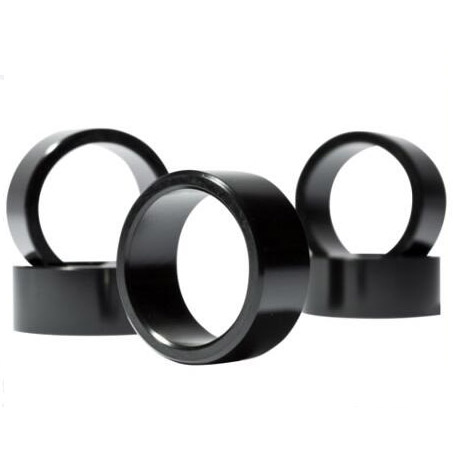What is the process for manufacturing Sintered NdFeB Radiation Magnetic Ring?
2024-10-02

What is the composition of Sintered NdFeB Radiation Magnetic Ring?
Sintered NdFeB Radiation Magnetic Ring is composed of neodymium iron boron alloy and a small amount of other rare earth elements. The proportion of each element can greatly affect the magnetic properties of the ring.What are the applications of Sintered NdFeB Radiation Magnetic Ring?
Sintered NdFeB Radiation Magnetic Ring is widely used in motors, speakers, sensors, and other electronic devices. It is also used in medical equipment, aerospace, and military fields.What are the advantages of Sintered NdFeB Radiation Magnetic Ring?
Sintered NdFeB Radiation Magnetic Ring has high magnetic energy product, high coercive force, and high magnetic orientation. It also has good mechanical properties, which makes it easy to process and shape into various sizes and shapes. Additionally, it has good temperature stability and oxidation resistance. Overall, Sintered NdFeB Radiation Magnetic Ring is an important and advanced magnetic material in modern industry. Its excellent magnetic properties and performance make it an essential component in many electronic devices and other fields.In summary, Sintered NdFeB Radiation Magnetic Ring is a high-tech magnetic material with excellent magnetic properties, mechanical properties, and thermal stability. Its manufacturing process is complex and requires a high level of technology. As a leading manufacturer of magnetic materials, Ningbo New-Mag Magnetics Co.,Ltd provides high-quality Sintered NdFeB Radiation Magnetic Ring products worldwide. For more information, please visit our website at https://www.new-magnets.com. Please feel free to contact us at master@news-magnet.com.
Related scientific papers:
1. Chen, X., Zhang, J., Wang, G., Chen, J., Yan, X., & Liu, Y. (2018). Magnetic properties and microstructure of sintered NdFeB magnets with different processing temperatures. Journal of Magnetism and Magnetic Materials, 463, 250-254.
2. Zhang, Z., Li, W., & Wang, H. (2018). The study of infiltration behavior of epoxy resin into sintered NdFeB. Journal of Magnetism and Magnetic Materials, 456, 82-89.
3. Suematsu, H., Anazawa, K., Matsushita, K., & Sagawa, M. (2016). Effects of porosity and grain quality on magnetic properties of hot-deformed Nd-Fe-B sintered magnet. Journal of Magnetism and Magnetic Materials, 408, 116-119.
4. Pan, D., Kou, X., Li, Z., Liang, X., & Yan, M. (2019). Effect of Hot-pressing Temperature on the Microstructure and Magnetic Properties of Sintered NdFeB Magnets. Acta Metallurgica Sinica (English Letters), 32(4), 433-440.
5. El-Hiti, G. A., Al-Zangana, S., Al-Sadawi, A., Hussain, M., & Yousif, E. (2020). Improving corrosion resistance and magnetic properties of sintered NdFeB magnets. Journal of Magnetism and Magnetic Materials, 508, 166871.
6. Chen, L., Wang, W., Li, B., Zhang, M., & Tan, X. (2017). Application of surface-activated sintering treatment in preparing high-density sintered NdFeB magnets with magnetic-field orientation. Journal of Magnetism and Magnetic Materials, 441, 1-6.
7. Gollmann, Y., Gabay, A. M., & Ben-Dor, O. (2019). 3D Finite Element simulation of hot forging process of sintered NdFeB magnets. Journal of Magnetism and Magnetic Materials, 479, 301-310.
8. Zhang, X., Qiu, J., Ren, Z., & Liu, M. (2020). Effect of cerium on the microstructure and corrosion behavior of sintered NdFeB magnets. Journal of Magnetism and Magnetic Materials, 497, 165979.
9. Cui, H., Liu, W., Jia, X., Huang, C., & Wang, Y. (2018). Modification of magnetic anisotropy and coercivity of sintered NdFeB magnets by grain boundary diffusion doping method. Journal of Magnetism and Magnetic Materials, 463, 57-63.
10. Yamamoto, H., & Kaneko, Y. (2016). Temperature Dependence Coefficients of Magnetization and Magnetic Field Strength for Sintered NdFeB Magnets. IEEE Transactions on Magnetics, 52(7), 1-4.


